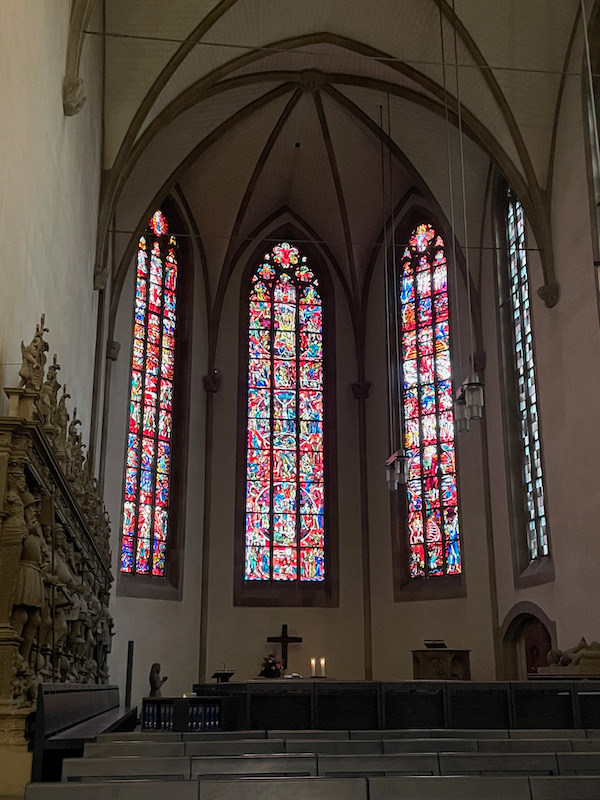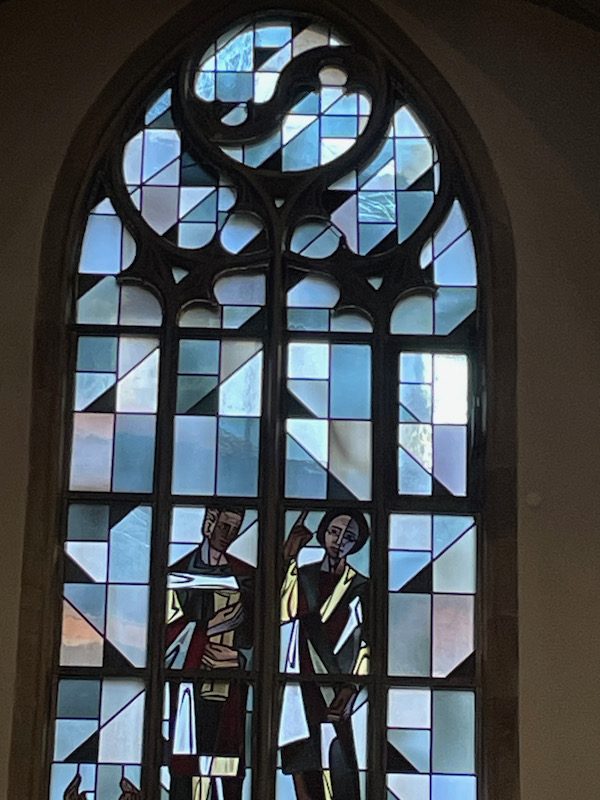Our Blog - Germany 2023 - Stuttgart, Germany
We had been to Stuttart before, in 2008, when we took a train from Paris to the city and went through the Mercedes-Benz museum. But it was a good place to base ourselves for 3 days while we explored several of the smaller towns around the area as well as seeing a few of the sights again. It is known as the cradle of the automobile ... Karl Benz invented the automobile and patented it in 1886, and Gottlieb Daimler, another pioneer, was based in Stuttgart. In addition to the Mercedes-Benz museum, we also drove past the Porsche Museum, which is also in one of the districts of Stuttgart.
Stuttgart is the 6th largest city in Germany but the 4th largest when you factor in the entire metropolitan area (almost 5.5 million people). It is consistently ranked high on the list of cities based on quality of living. The Romans settled here in 83 AD and during the 10th century, the Duke of Swabia used the area to breed warhorses.
Hauptbahnhof (main railway station) was designed in 1920 and sits at one end of the Königstraße (Kings Street), the main pedestrian zone of the city. The station building consists of cubes nested symmetrically and asymmetrically. It is characterized by cubes of different size, dimension and design. The 184-foot-tall tower is a landmark of the city. As you can see, there is some work going on here.
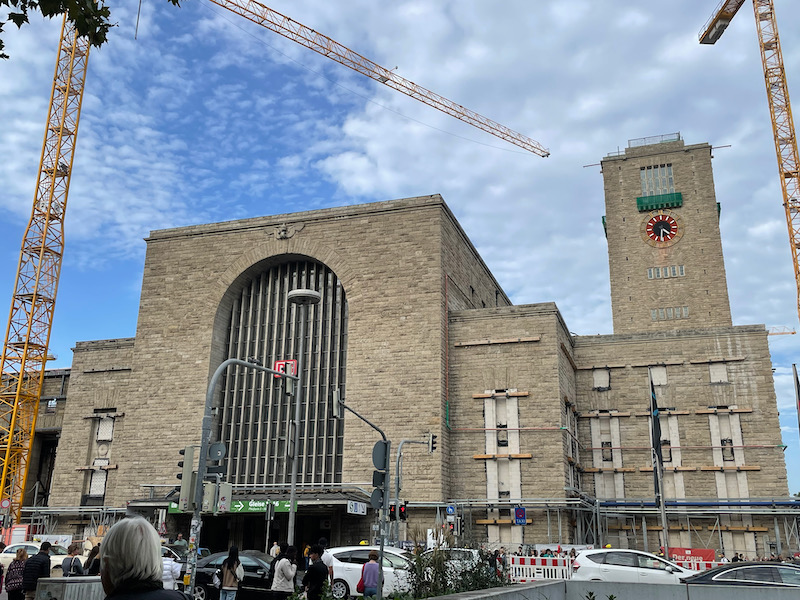
Schloßplatz (palace square) is the largest square in Stuttgart, separating the pedestrian zone into "upper" and "lower" sections. It was originally part of the pleasure gardens of the Old Castle and served as a military parade ground from 1746-1918. It has a few important buildings surrounding it, as well as fountains, a column, a music pavilion, and lots of grass. As we entered the square, we passed by the monument to Duke Christoph of Württemberg, he 4th Duke of Württemberg (reign from 1550 to 1568).
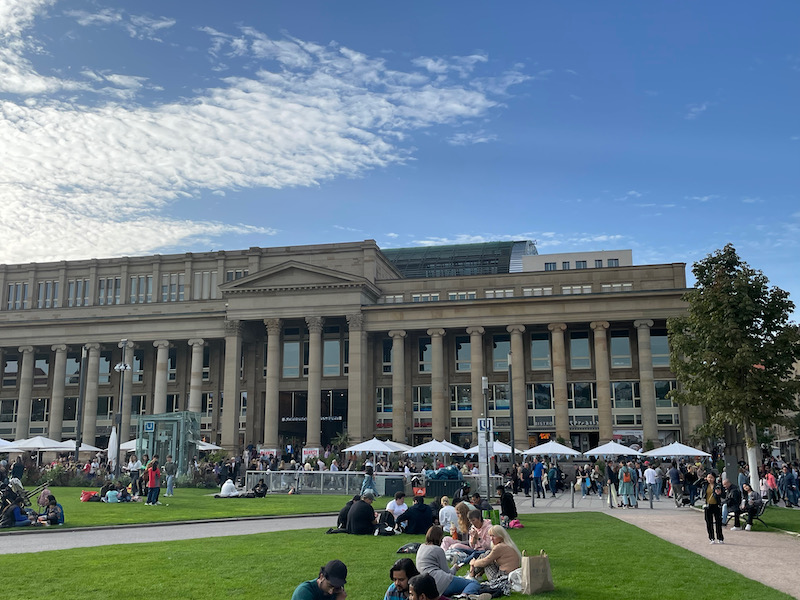
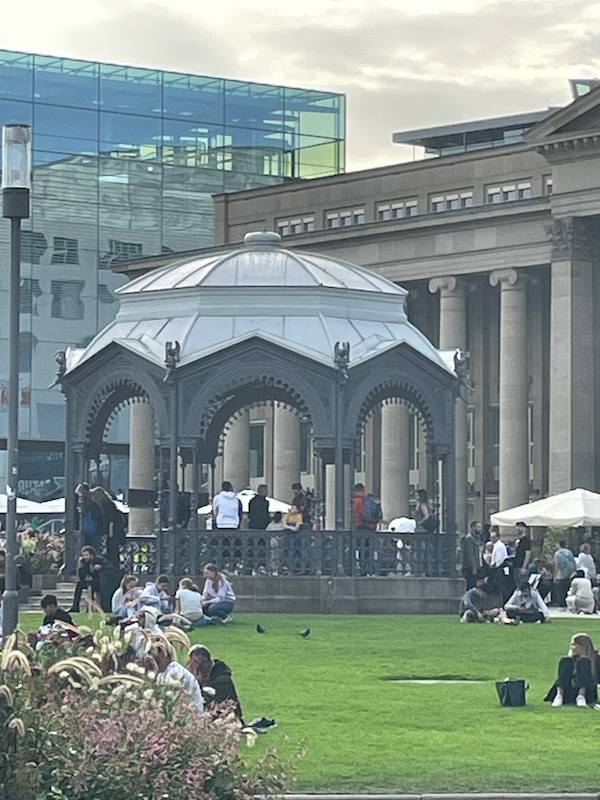
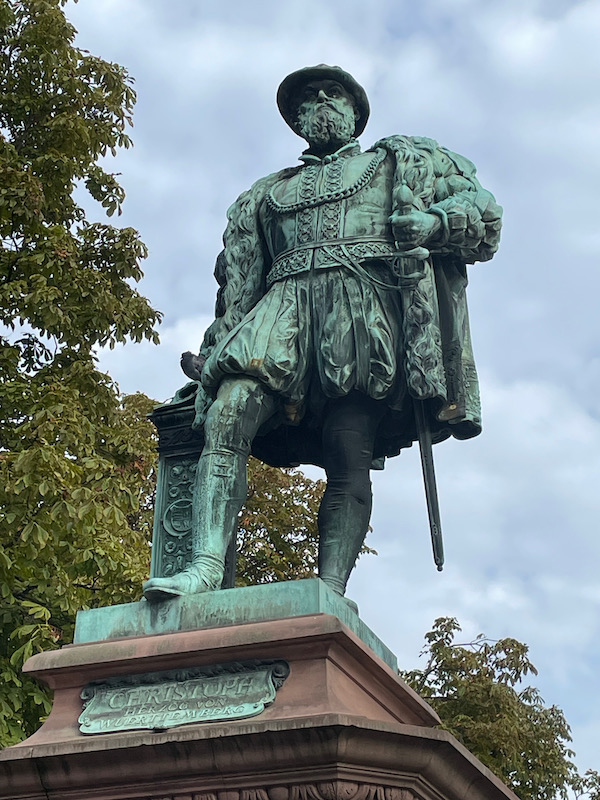
In the middle of the square is the Jubilee Column, erected in 1846 to mark the 25th anniversary of the government and the 60th birthday of King Wilhelm I of Württemberg. The column consists of a 30 meter high granite shaft, the 5 meter high statue of the Roman goddess Concordia, 4 reliefs depicting historical scenes, and 4 allegorical figures at the corners of the column base. I only got 2 allegorical figures (Defense with a sword and shield, and Art and Science with the lyre and book) and 1 historical scene (part of the Battle of Fère-Champenoise on March 25, 1814).
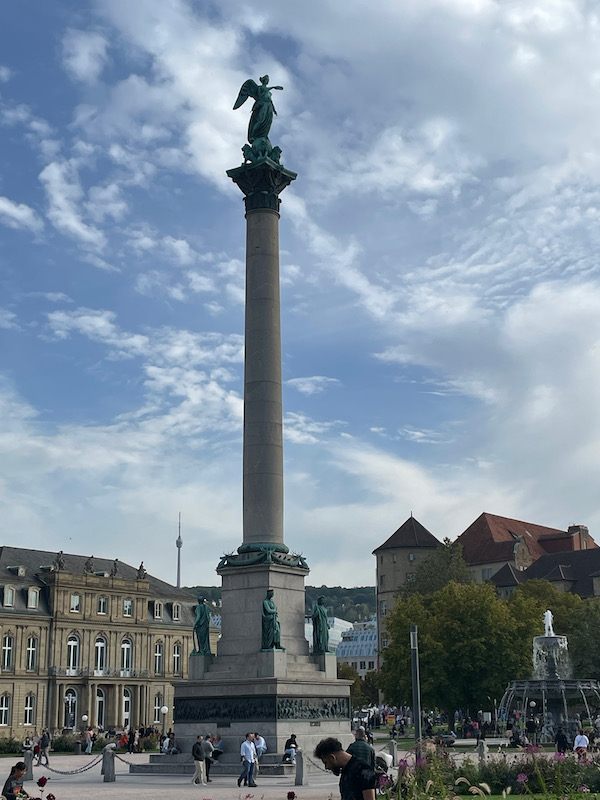
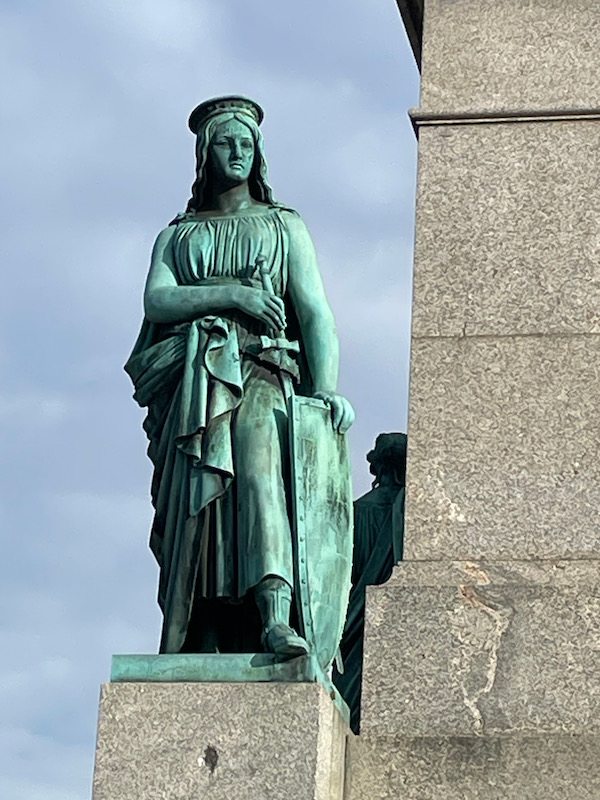
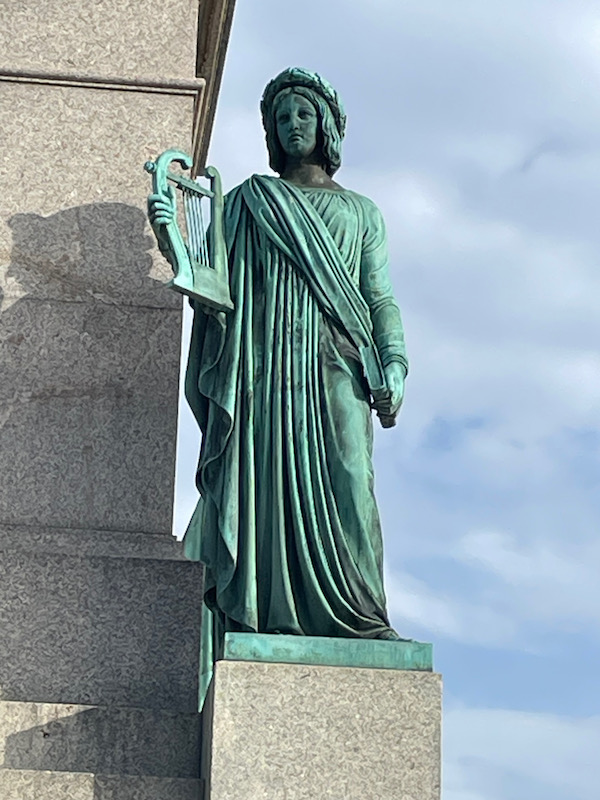
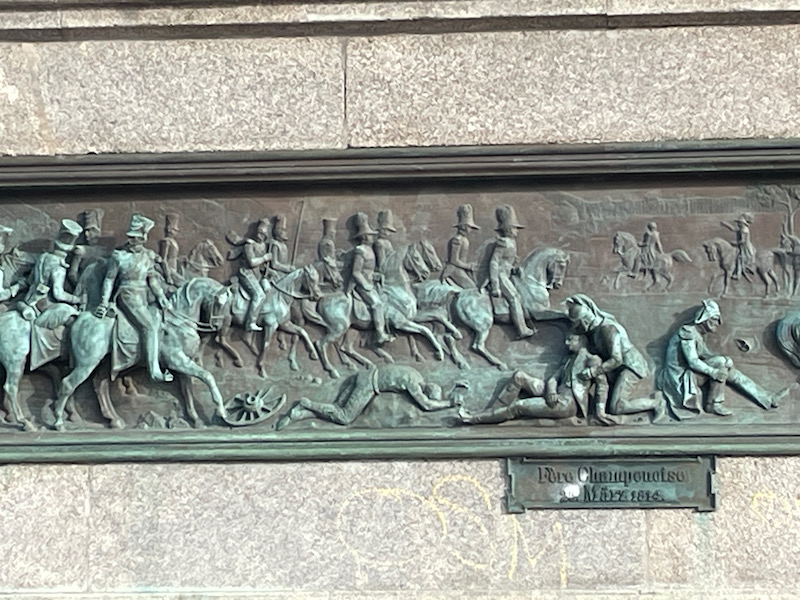
On either side of the Jubilee Column is a fountain. Each has 4 figures that represent the important rivers in the Württemberg area and were installed here in 1863. One of them has figures that represent the Neckar, Kocher, Fils, and Enz rivers while the other represents the Donau, Nagold, Tauber, and Jagst rivers. One of the fountains has the original figures from the 1800's but the original figures from the other fountain disappeared in 1945 and were recreated in 1989 based on pictures.
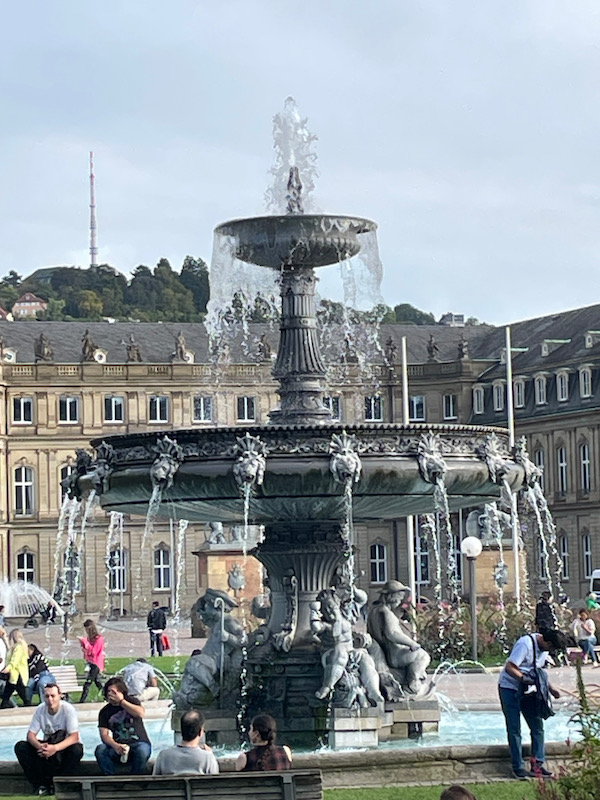
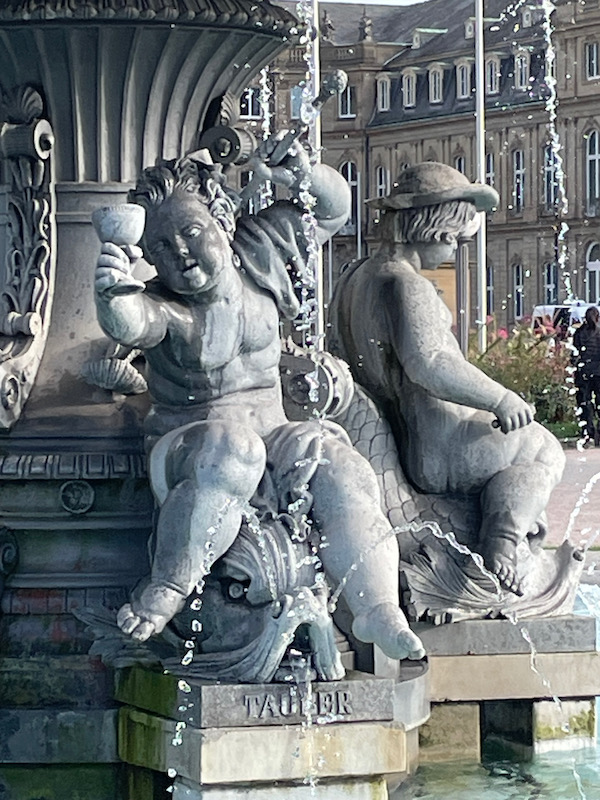

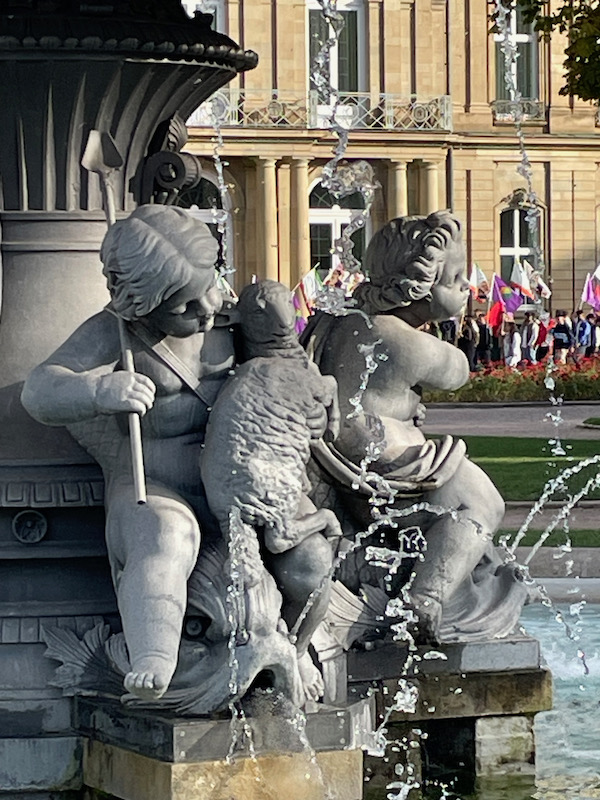
On one side of the square is the Neues Schloss, or New Castle. It was started in 1746 and completed in 1807. The story is that in 1746, Duke Carl Eugen succeeded his father had wanted to move the ducal residence back to Stuttgart from Ludwigsburg (about 12 km away) but required a new palace like that of Versailles in France. They started building it in 1746 but a fire in 1762 completely destroyed the garden wing. Construction stopped in 1764 and Carl moved his residence to Ludwigsburg in 1764. In 1775, he returned to Stuttgart and the castle was mostly completed when he died in 1793. It is a horseshoe-shaped completed with 3 wings with a set of statues of goddesses around the top.
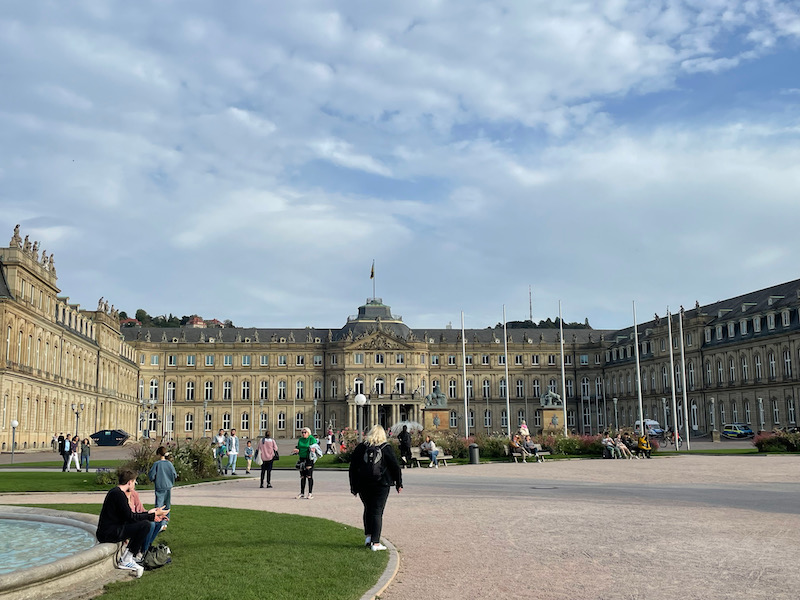
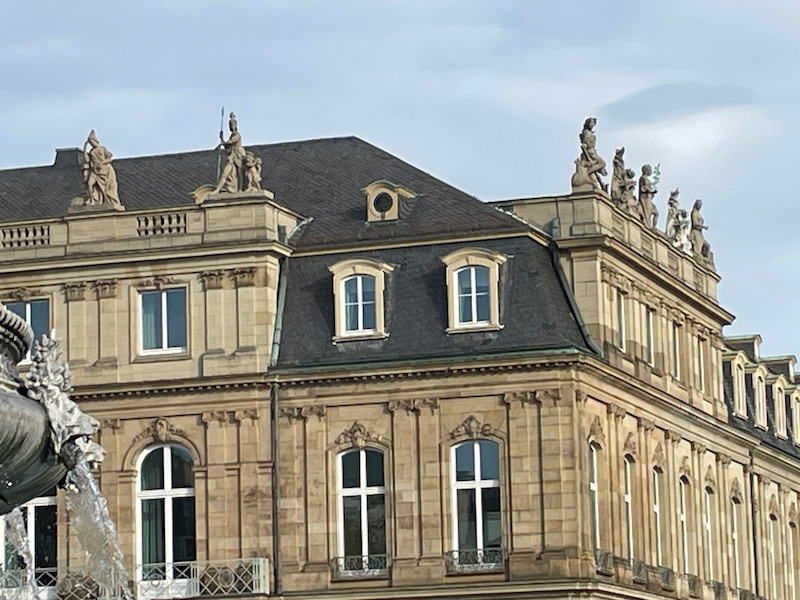
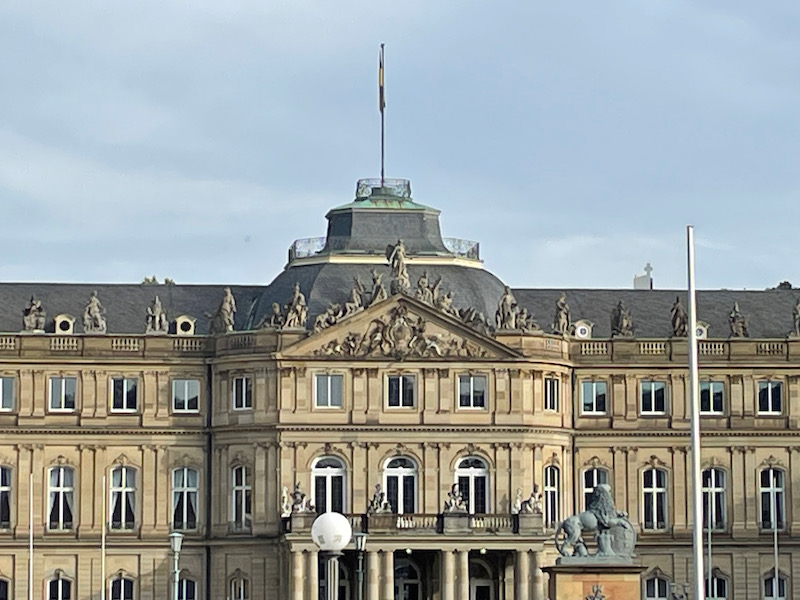
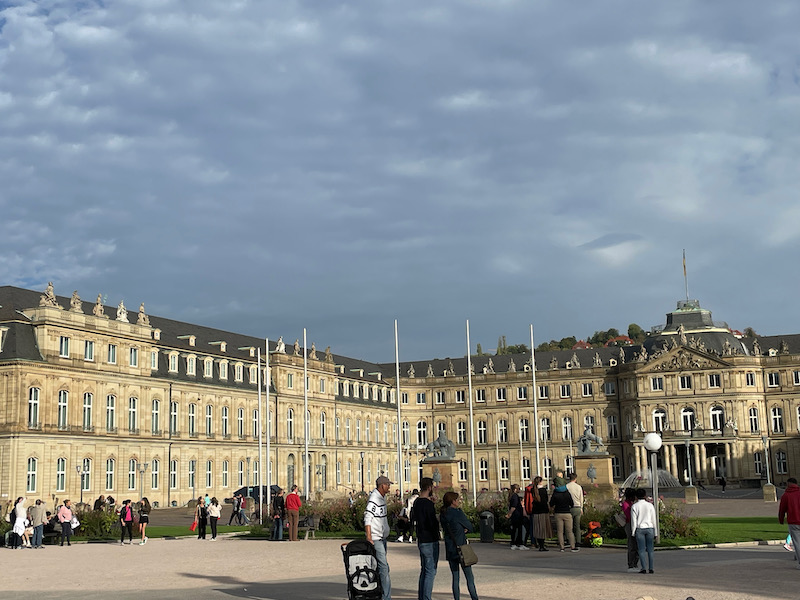
They didn't move very far away, since the Altes Schloss, or Old Castle, is pretty much right next door. Originally built around 1200, it had a moat until the 18th century. In the 16th century, it was transformed into a Renaissance castle and an arcaded courtyard was built. In the courtyard is an equestrian statue of Duke Eberhard I, sometimes called "Eberhard in the beard".
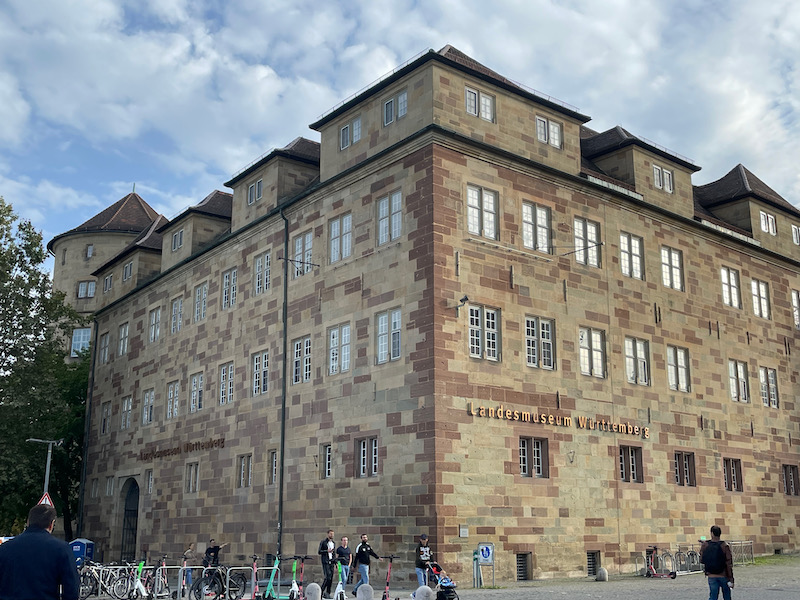
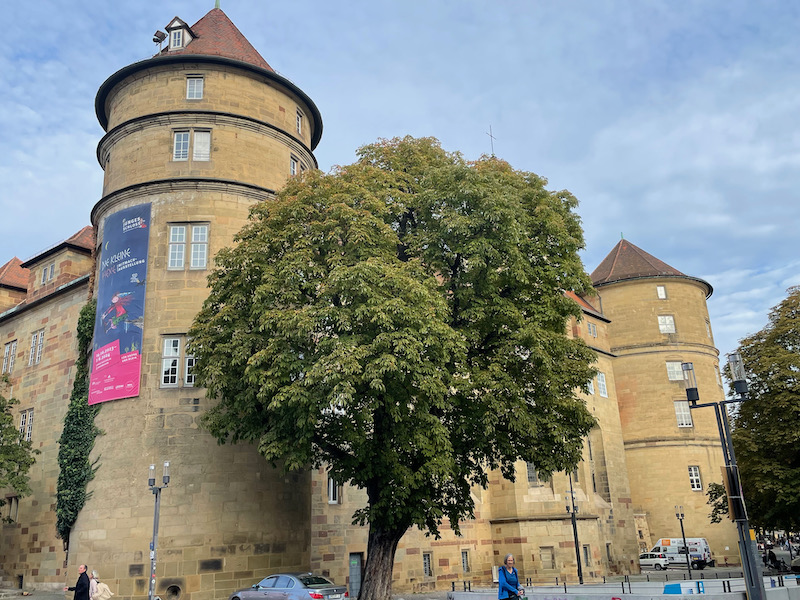

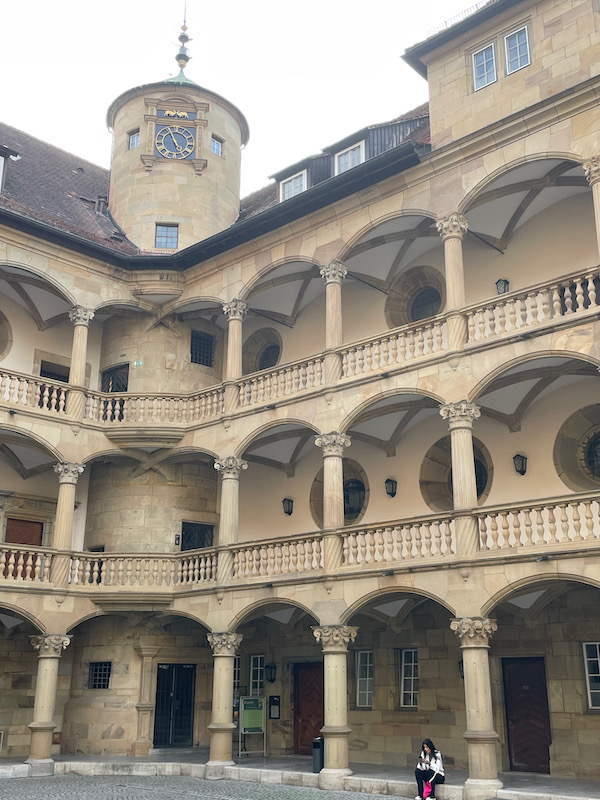
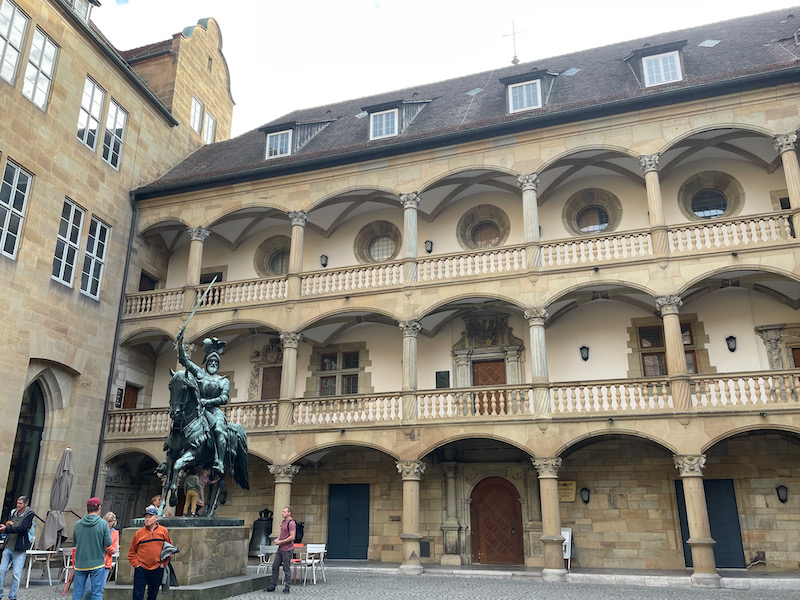
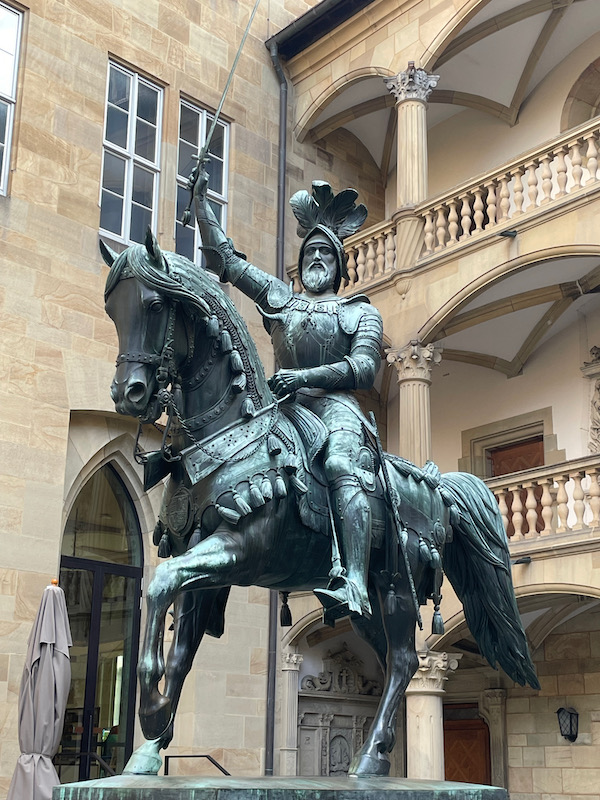
Before the New Castle was built, Schillerplatz used to be known as Schloßplatz (Castle square) and then was renamed when the New Castle was built. The name comes from the 1839 monument of the German poet Friedrich Schiller. On the square are the Fruchtkasten (a late Gothic stone house and one of the oldest surviving buildings in the city), and the Stiftskirke (a Collegiate Church).
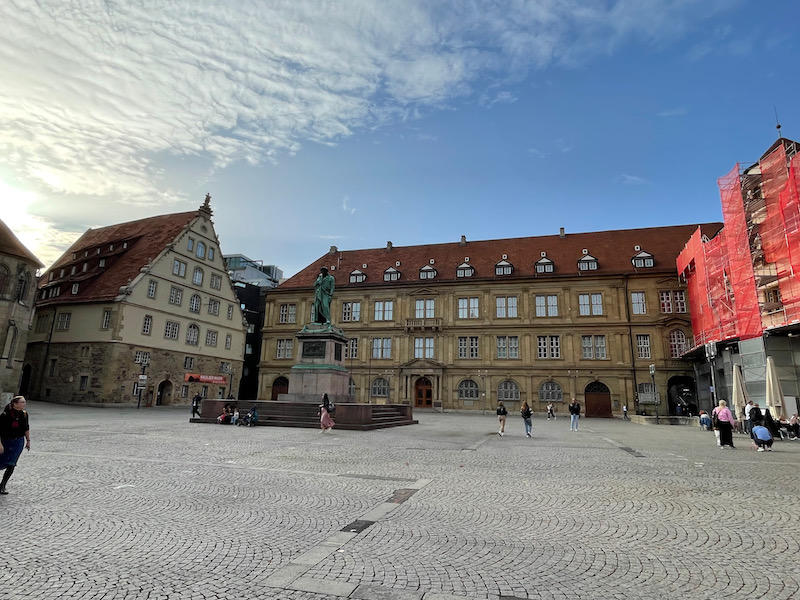
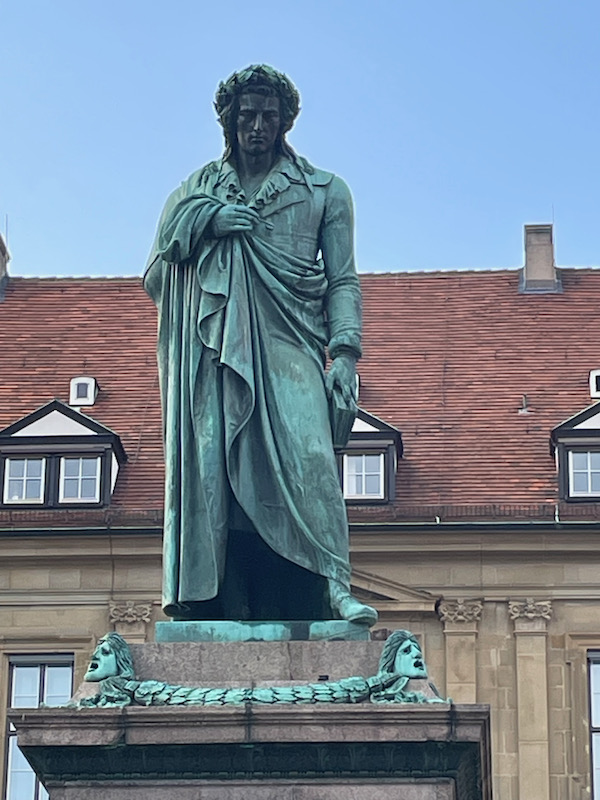
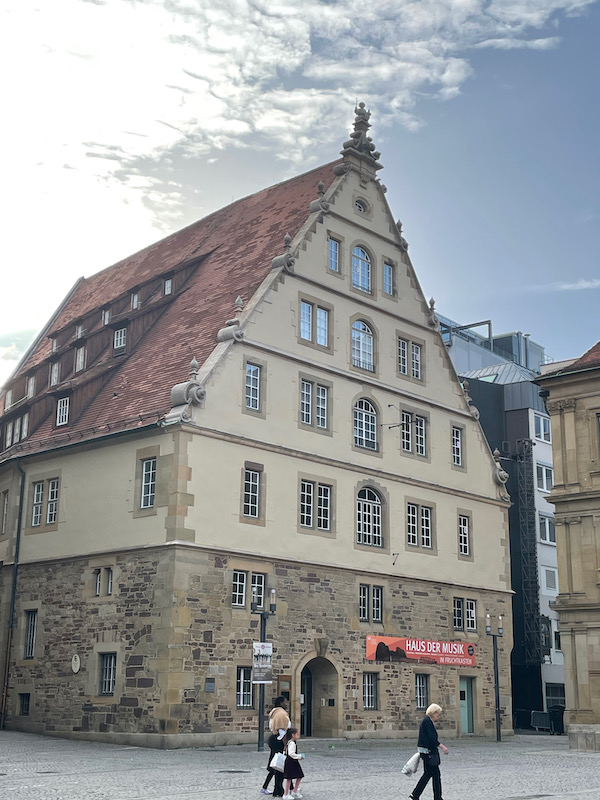
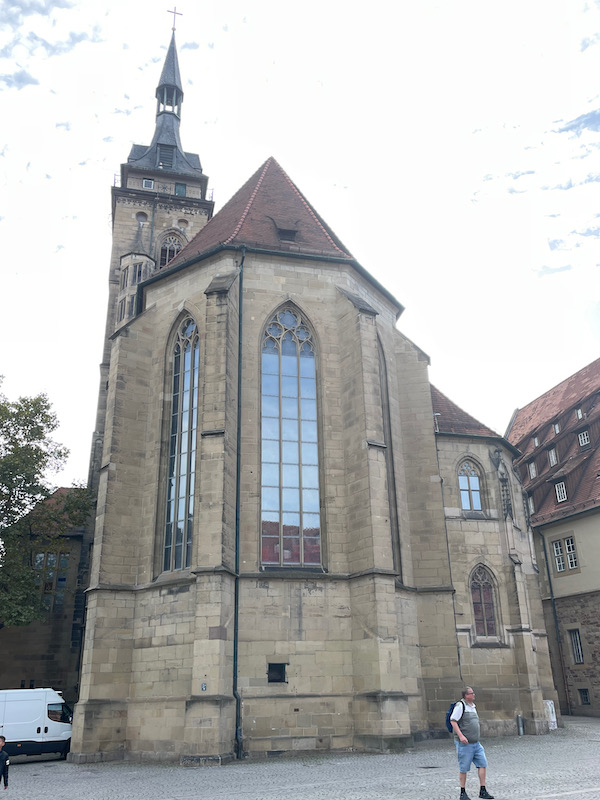
There has been a church at the location of the Stiftskirke since the 10th century. Originally a small Romanesque church, a new 3-nave church with 2 towers was built in 1240. Near the end of World War II, the church was heavily damaged by the bombing raids on Stuttgart in 1944. The church was rebuilt in the 1950s with the interior in a modern style. They were setting up for a concert so I only got a couple pictures. I had hoped to get back before we left Stuttgart but never found the time.
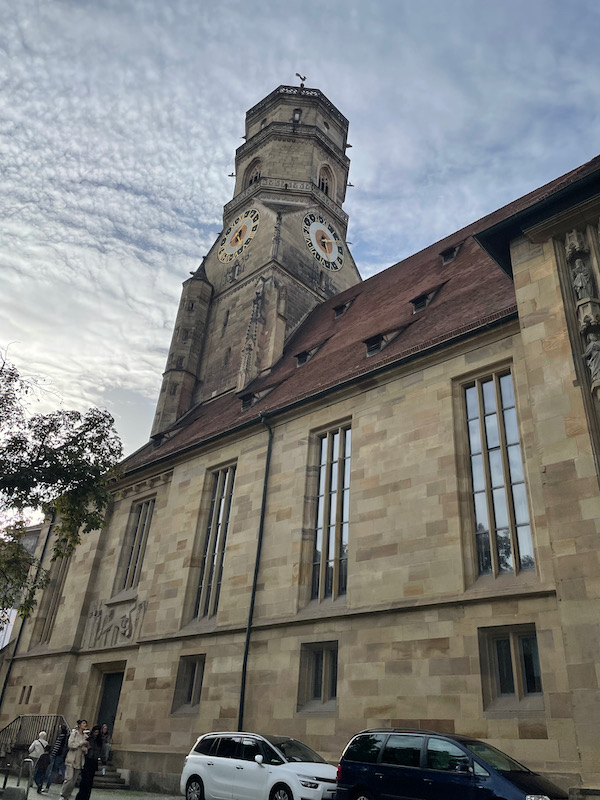
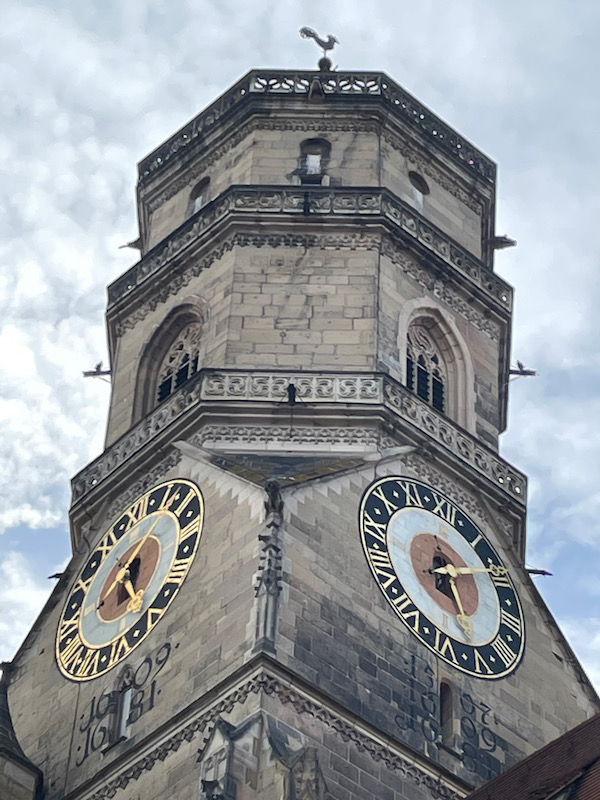
This is called the Apostle Gate, and it was originally built in 1494 but it was moved and rebuilt after WWII. The center figure on the top row is Christ. On either side of Christ, and on the row below, are sets of 3 apostles. Left to right on the top row are James the Elder, Andrew, Peter, John, James the Younger, and Judas Thaddeus. Then left to right on the lower row are Philip, Simon, Matthew, Thomas, Paul, and Bartholomew.
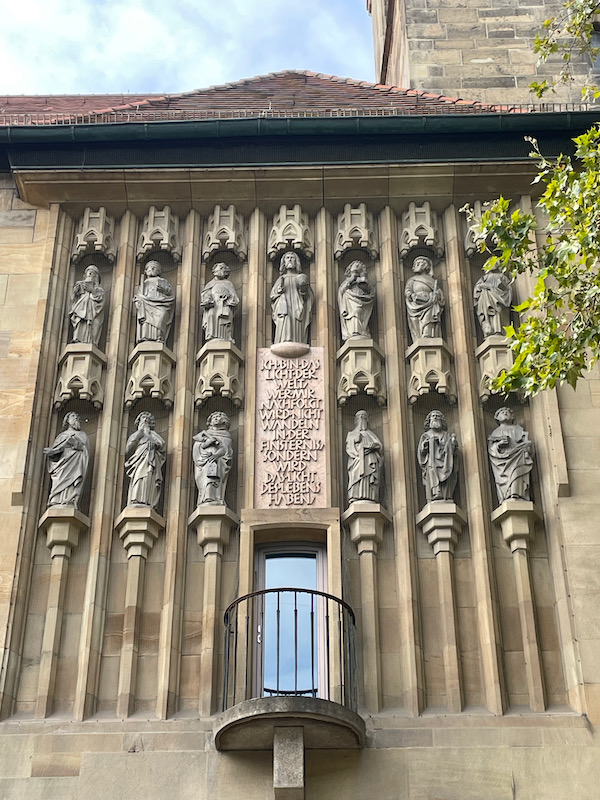
As I mentioned, not many pictures on the inside as I wasn't allowed to really walk around.
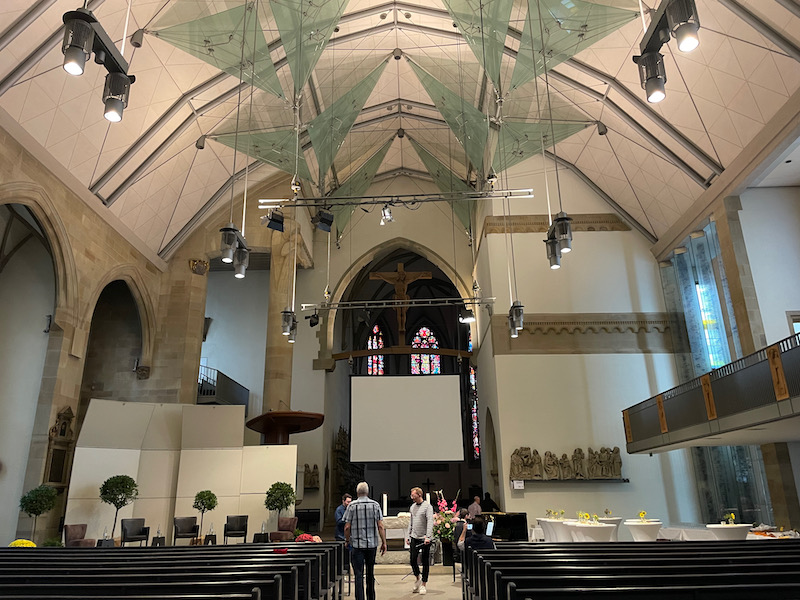
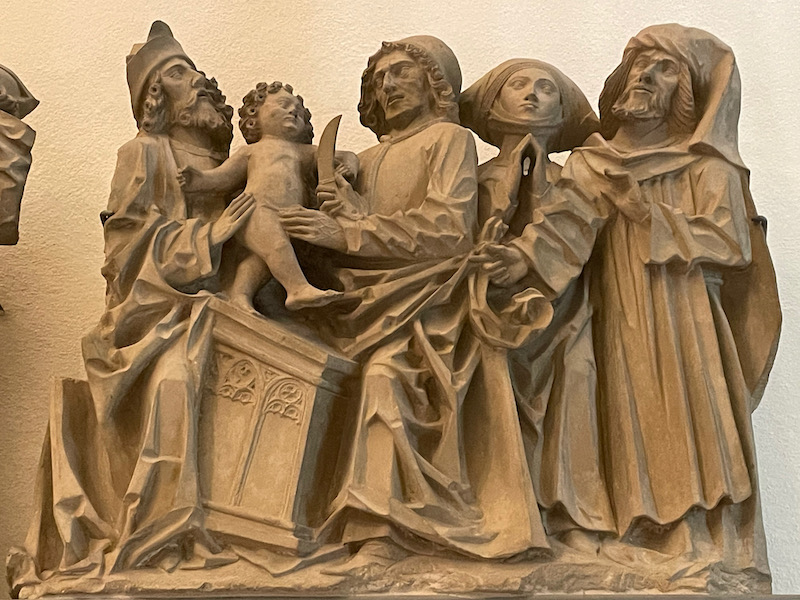
During WWII, all of the stained glass windows were destroyed with only the frames partially preserved. The windows were gradually rebuilt starting in the 1950's and finishing in 2002.
